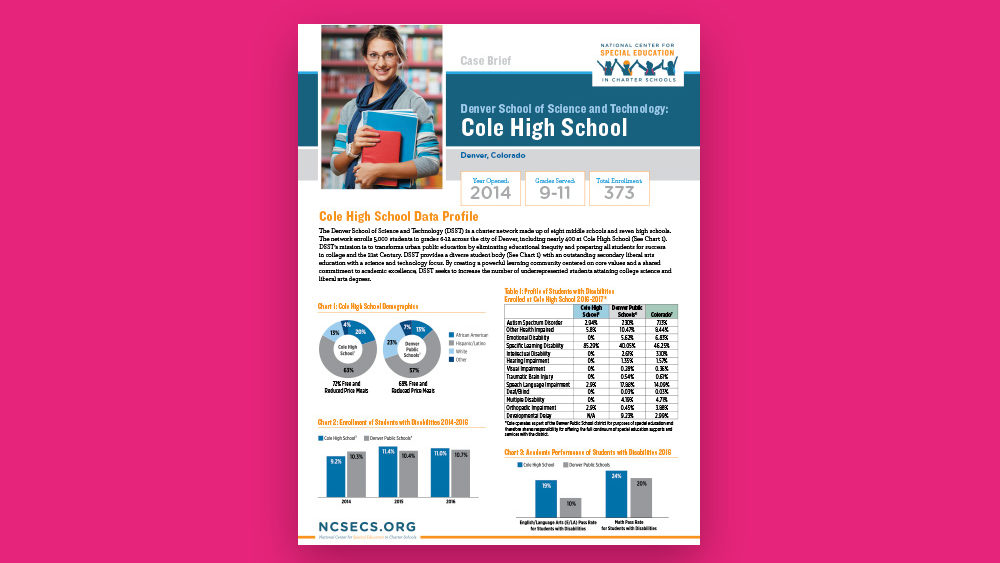By: Stephanie Lancet
As part of its effort to share best practices with the special education community, The Center for Learner Equity (The Center for Learner Equity) identified several public charter schools across the country as “Centers for Excellence” and is communicating how each school uniquely leverages its autonomy to benefit students with disabilities. Here is a spotlight on one of them.
Denver School of Science and Technology (DSST) – Cole High School (Cole), a public charter school within the DSST network, serves students from 9th to 11th grade. Cole educates one of the largest proportions of students with mild disabilities in inclusive classrooms in its district, and, in 2016, ranked as the fifth highest-performing high school in Denver and the third highest in ELL proficiency growth. In order to effectively serve students with diverse learning needs, Cole modifies its network’s relatively structured approach to instruction. Our case study specifically explores the school’s modified curriculum and instruction, as well as its professional development model.
Cole teachers cite the ability to create new courses or to modify the curriculum as essential to supporting students’ success. Guided by the school’s mission and objectives, for example, teachers may add foundational courses or make adjustments to the 10th grade trimester internship program as needed. This allows teachers the flexibility to meet the needs and foster the strengths of individual students. Moreover, the school supports intensive co-teaching practices, such as shared planning and professional development, to promote effective differentiation.
Coaching, a vital part of DSST and Cole’s professional development model, provides teachers the opportunity to continuously improve and hone their skills with each other’s assistance. Utilizing tools such as video commentaries and observation annotations, the school fosters a sustained cycle of professional feedback, reflection, and modification, with the ultimate objective of improving the experiences of students with disabilities. This practice contributes to a positive school culture, one which nurtures inclusion via comprehensive teacher support.
Together, Cole’s flexibility in curriculum and instruction and its coaching model support the school in balancing and maintaining an inclusive educational model with rigorous learning goals and high expectations. To learn more about DSST – Cole High School, and its approach to serving students with learning differences, read our full case study here.

Comments are closed.